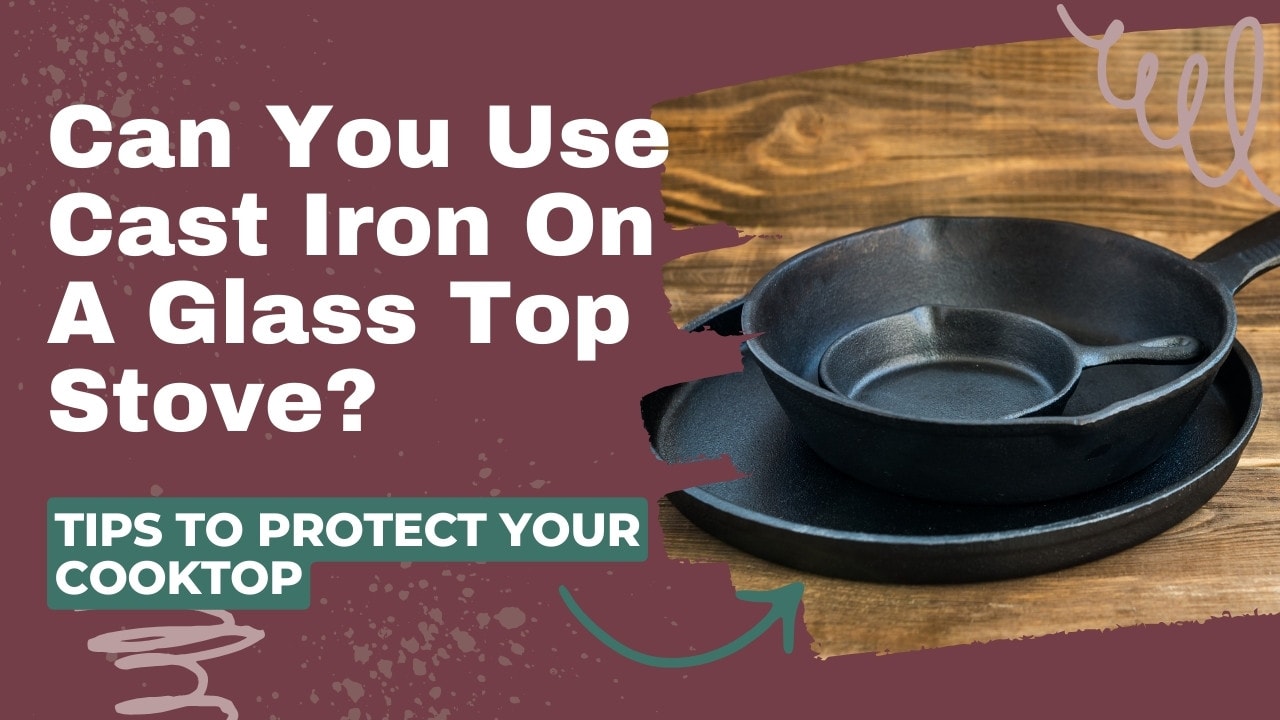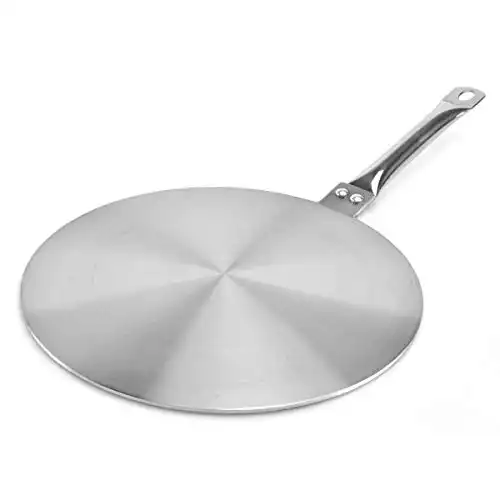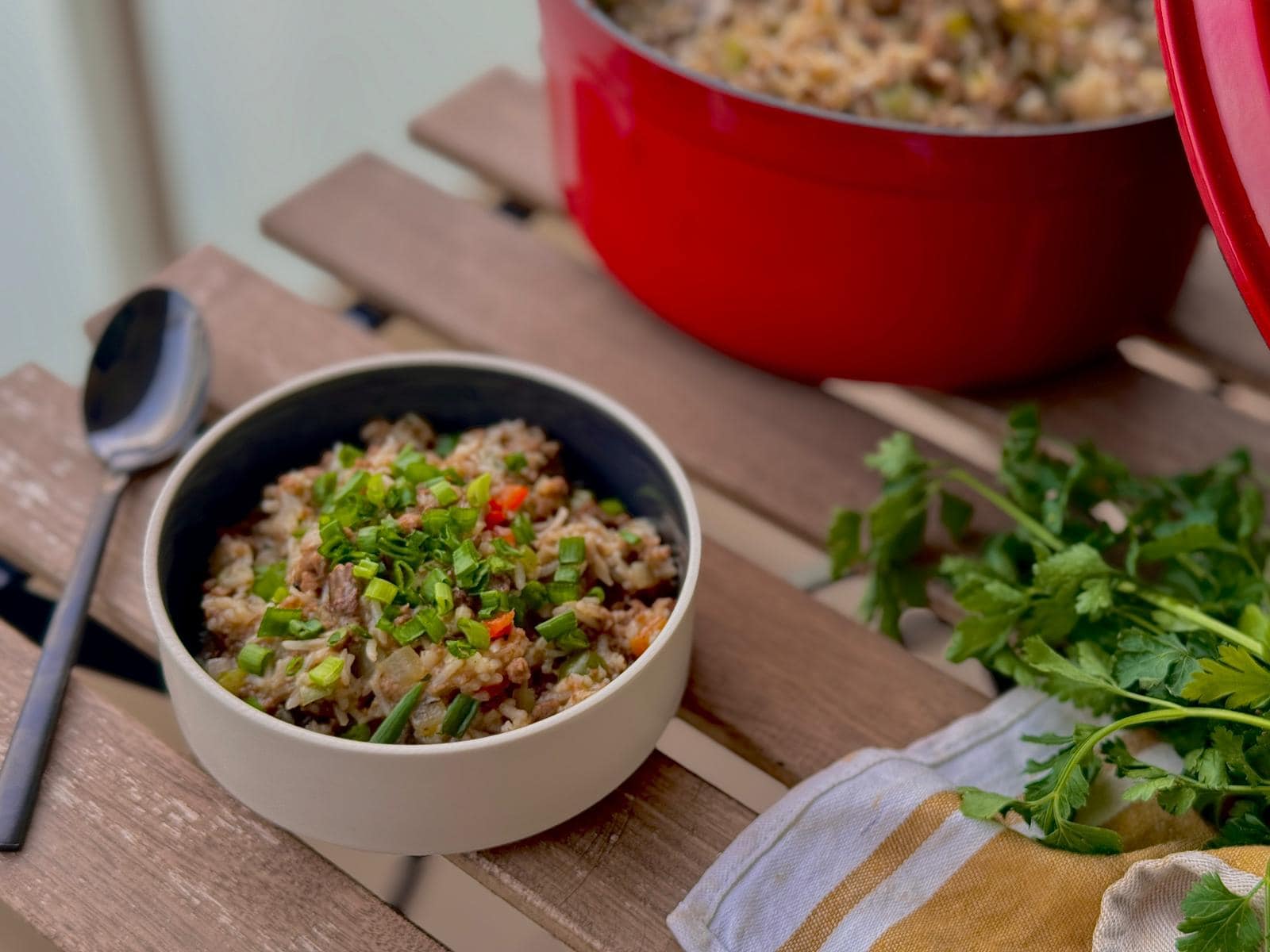After buying my new glass top stove, I was so worried about damaging the mirror-shiny surface that I almost didn’t use it! And I did my best to keep my rugged cast iron away from my precious stove since I thought they were each other’s worst enemies.
But then I realized that glass-top stoves aren’t that delicate, and I can use my cast iron skillet as long as I keep a few things in mind. It may take more care and caution, but it’s worth it.
In this post, I’ll share what I learned to keep my glass-top stove scratch-free and use my cast iron skillet every day.
Can You Use Cast Iron on a Glass Top Stove?
You can use cast iron on a glass-top stove as long as you’re careful, since the cookware’s rough base can scratch the glass. Sliding the pan over the surface and dropping it are the worst things that can damage the glass top. Opt for carbon steel or enameled cast iron if you’re worried about losing the sleek surface.
Related: Best Cookware for Glass Stove Tops
How To Protect a Glass Top Stove From Cast Iron
You can protect a glass-top stove from a cast iron skillet using a heat diffuser. It acts as a barrier between the two surfaces and prevents the skillet’s rough base from scratching the glass. If you don’t have a diffuser, avoid dragging the pan over the glass and put it gently on the stove to avoid damaging the glass.
Do’s and Don’ts for Using Cast Iron on Glass Cooktops
Follow these tips to protect the glass and prolong its lifespan.
1. Watch the Temperatures
Cast iron skillets take a little longer to heat up because of their thickness. Plus, glass stoves don’t heat pots and pans as fast as a gas stove. Cast iron needs to heat up gradually to achieve an even temperature all around the surface. If you crank up the heat all the way from the beginning, you’ll experience hot spots – and could even crack your cookware!
This is even more important if you’re using enameled cast iron. Heating it up too quickly can cause thermal shocks and crack the glazing.
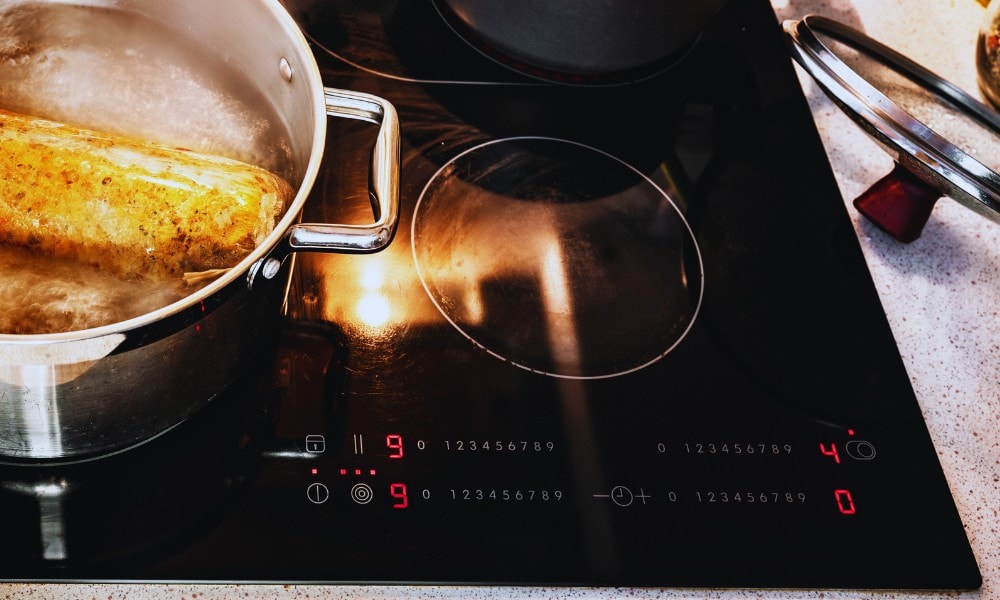
So, factor in about five minutes in your cooking time to heat up your cast iron over low to medium heat. But don’t overdo the preheating since cast iron takes a long time to cool down, too.
2. Don’t Slide the Cookware
This is the most important thing to remember when using cast iron on a glass-top stove. Many chefs avoid cast iron on glass-top stoves because it’s rough and can scratch the glass. Plus, some cast iron skillets have the manufacturer’s logo stamped on their bottom. This creates an uneven and rough surface that can gouge glass.
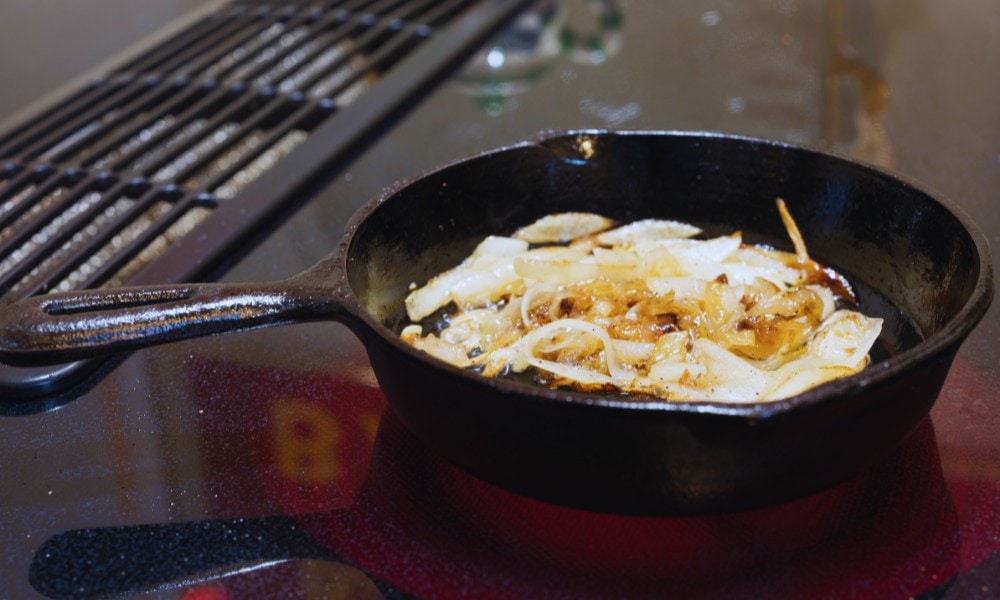
When moving your cast iron skillet, don’t drag it on the surface. Lift it instead. This way, you can prevent scratches and keep the glass sleek.
Even if your cast iron is enameled, dragging it along the surface isn’t a good idea. Any friction can create tiny grooves on the glass and enamel surfaces that worsen over time. Some enameled cast iron pans have smoother bottom surfaces and won’t cause much of an issue, but I still wouldn’t do that to avoid scratching my beautiful glass stovetop.
Related: Best Enameled Cast Iron Cookware Sets in 2024
3. Don’t Drop the Skillet
Cast iron is heavy. So, especially if it’s full of food, you could drop it on the glass surface if you’re not careful. This could also happen if it has a silicone handle protector that slips off. And as we all know, dropping a 4lb skillet can crack or break a glass stovetop.
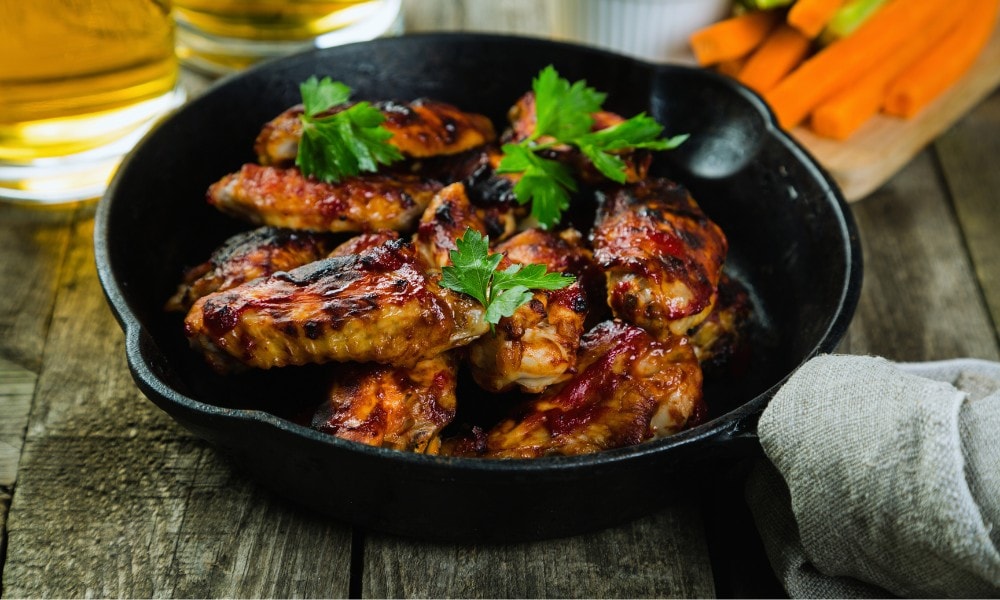
Since cast iron handles get hot, you should always use a potholder to pick up the pan.
4. Don’t Leave Cookware On the Glass Surface
You shouldn’t leave any kind of cookware sitting on your glass or ceramic cooktop. But this is especially true with cast iron, since it cools so slowly.
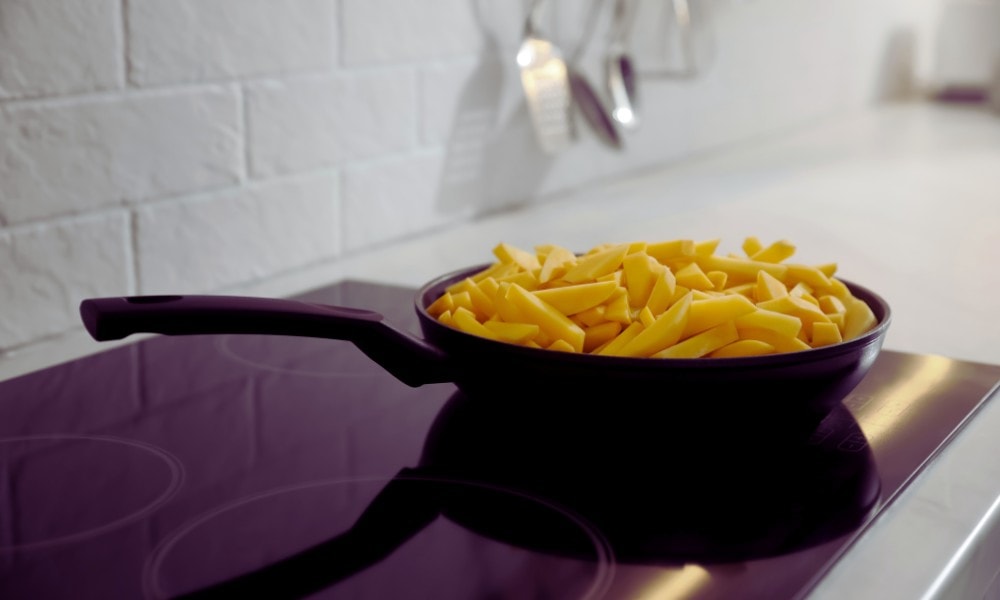
After you’re done cooking, remove the pan from the stove and let it cool somewhere else. Leaving hot cookware on a glass-top stove will scorch the surface and create marks. The longer the pan remains hot, the higher the chances of damage. Plus, it can burn your food since glass-top stoves don’t cool down quickly either!
5. Prep the Pan Before Using
Glass-top stoves can get scratched by built-up grease or stuck-on bits of food on the bottom of pots and pans. So, make sure the bottom is spotless before putting it on the stove.
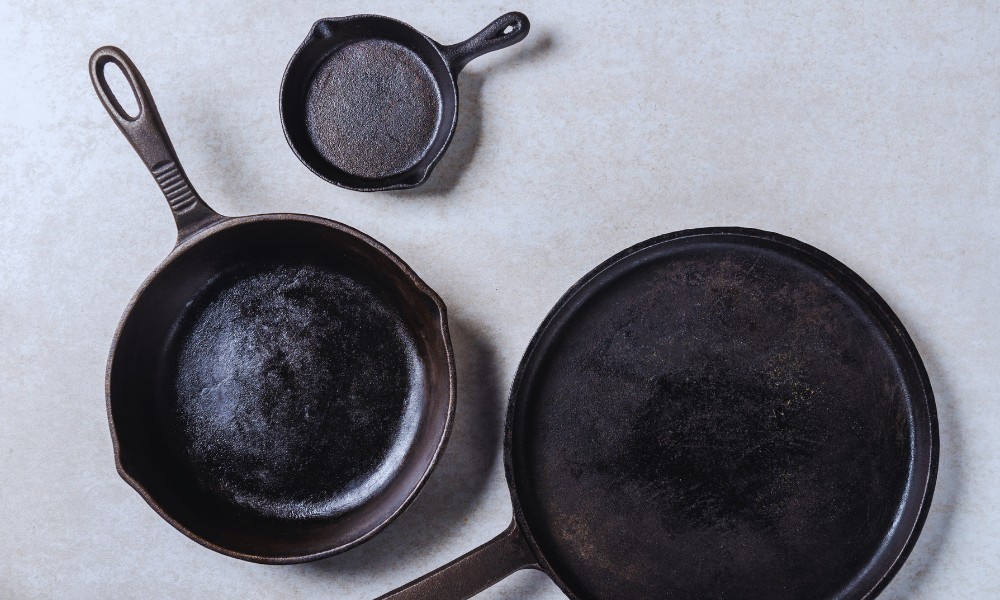
And since cast iron has a rough bottom, dirt, food bits, or grease can get into the crevices more easily. Food bits can burn quickly, and the carbon will stain the glass.
Before putting your cast iron skillet on the glass-top stove, wash and dry it thoroughly to remove bits of dried food clinging to the pan. If your cast iron is well seasoned, you shouldn’t be afraid to use soap on it to remove excess grease.
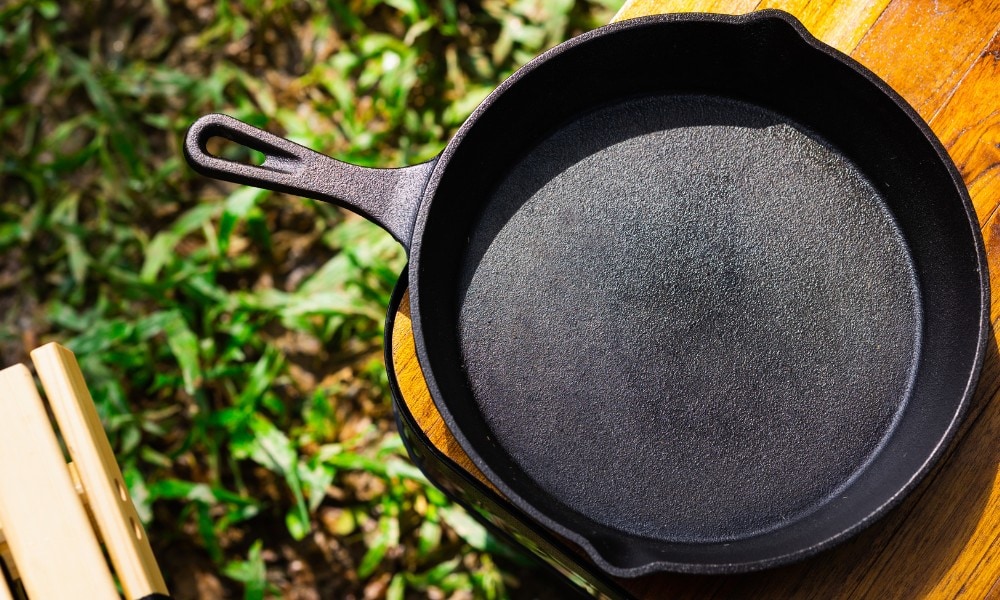
Season the pan’s interior and exterior. When you season your cast iron skillet before use, you give it a sleek and grime-free surface that improves your cooking experience with a glass stove.
6. Use the Right Size Pan
Cookware needs to come in full contact with a glass stove burner to heat effectively. And the cookware’s base should be the same size as the burner’s radius. If it’s smaller or larger, you won’t get even heating – and you risk cracking brittle cast iron pans. So, make sure the size difference isn’t more than 1 inch.
7. Clean and Dry the Pan After Use
Keeping your cast iron pan clean and dry is always a good idea, but it’s more important when it comes to glass cooktops.
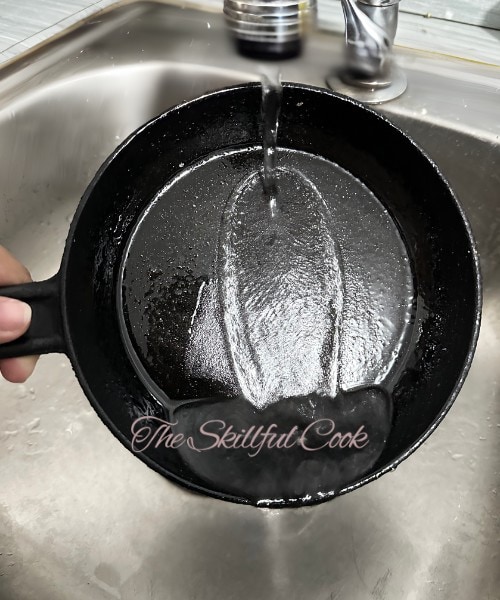
After you’re done cooking, wash the pan with warm water and dish soap to remove grease and food bits. Then, dry it thoroughly before storing it to prevent rust. Keeping cast iron rust-free protects the glass surface, since rust can also stain it.
8. Check the Cookware’s Bottom Before Every Use
Whenever you plan to use your cast iron skillet, inspect it carefully for chips, burrs, or other types of damage. Minor imperfections are okay, but deep and sharp chips can damage your glass. You may need to file down the ships or replace the pan to protect your glass-top stove.
9. Use a Heat Diffuser
Sometimes, I get so immersed in my cooking that I unintentionally slide the pan on the glass. You do that, too?
If your cast iron skillet is too rough for the glass, or you simply can’t keep the safety tips in mind, a heat diffuser can save you the trouble. It creates a barrier between the glass and the skillet’s bottom, preventing damage and scratches.
It can also help with even heating, prevent hot spots, and keep the pan from overheating. I recommend this Coozyer stainless steel diffuser, which is compatible with induction and electric stoves.
Frequently Asked Questions
Will cast iron scratch a glass cooktop?
Cast iron can scratch a glass cooktop if you don’t handle it carefully. The rough bottom has tiny chips and burrs that can damage the glass if you slide the pan on the surface. Instead, you should lift up the pan and avoid dropping it on the glass – or try a carbon steel pan instead.
What pans work best on glass-top stoves?
The best pans for glass-top cooktops are stainless steel and carbon steel since they have a smooth base that doesn’t damage the glass. Cast iron can work, but it requires extra care and attention. You can use enameled cast iron instead of regular cast iron to protect your glass-top stove.
Also Read: What Pans Cannot Be Used On Glass Stovetops?
Conclusion
You can use cast iron with a glass cooktop if you handle it gently. Since regular cast iron cookware usually has rough bottoms, you shouldn’t slide it on the surface. Dropping cookware can also damage the glass surface because cast iron is heavy. You also need to be careful to heat your cast iron skillet slowly on a glass cooktop, and adjust for its longer cooling times. Carbon steel is a good alternative, because since it’s made of iron and carbon, it cooks similarly to cast iron but it has a smooth and glass-friendly bottom.

